Related Research Articles

The kākāpō, sometimes known as the owl parrot or owl-faced parrot, is a species of large, nocturnal, ground-dwelling parrot of the superfamily Strigopoidea. It is endemic to New Zealand.

Fiordland National Park is a national park in the south-west corner of South Island of New Zealand. It is the largest of the 13 national parks in New Zealand, with an area covering 12,607 km2 (4,868 sq mi), and a major part of the Te Wāhipounamu a UNESCO World Heritage Site established in 1990. The park is administered by the Department of Conservation. The southern ranges of the Southern Alps cover most of Fiordland National Park, combined with the deep glacier-carved valleys.

The South Island takahē is a flightless swamphen indigenous to New Zealand and the largest living member of the rail family. It is often known by the abbreviated name takahē, which it shares with the recently extinct North Island takahē. The two takahē species are also known as notornis.

Mark Carwardine is a British zoologist who achieved widespread recognition with his 20-year conservation project – Last Chance to See – which involved round-the-world expeditions with Douglas Adams and Stephen Fry. The first series was aired on BBC Radio 4 in 1990, and the second, a TV series, on BBC2 in 2009. There are two books about the project: Last Chance to See, which he co-wrote with Adams (1990), and Last Chance to See: In the footsteps of Douglas Adams (2009). He is a leading and outspoken conservationist, and a prolific broadcaster, columnist and photographer.
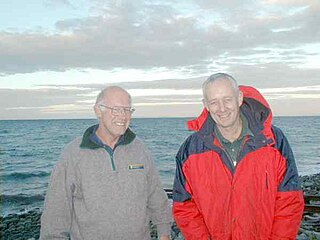
Donald Vincent Merton was a New Zealand conservationist best known for saving the black robin from extinction. He also discovered the lek breeding system of the kākāpō.
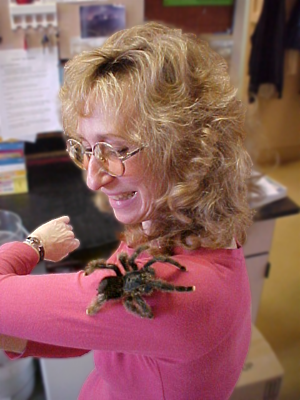
Sy Montgomery is an American naturalist, author, and scriptwriter who writes for children as well as adults.

Dame Alcyion Cynthia Kiro is a New Zealand public-health academic, administrator, and advocate, who has been serving as the 22nd governor-general of New Zealand since 21 October 2021. Kiro is the first Māori woman and the third person of Māori descent to hold the office.
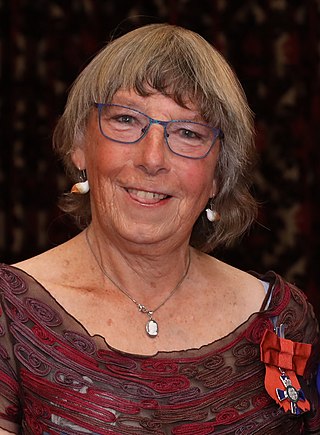
Kerry-Jayne Wilson was a New Zealand biologist and lecturer in ecology at Lincoln University in the Faculty of Agriculture and Life Sciences.
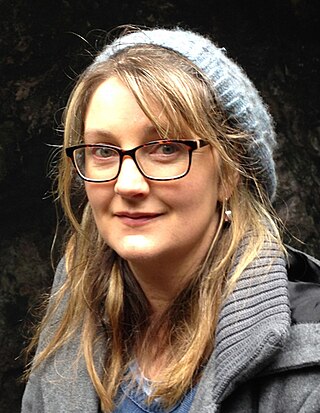
Ruth Paul is a children's picture book author and illustrator from Wellington, New Zealand.
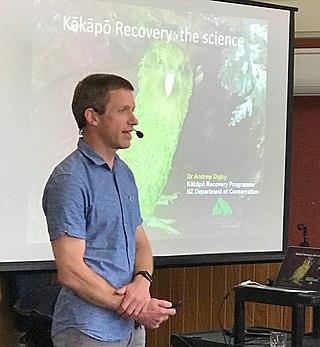
Andrew Digby is an astronomer and ecologist whose work focusses on researching and conserving New Zealand's endangered endemic birds.
Pip Adam is a novelist, short story writer, and reviewer from New Zealand.

Jan Thomas is a veterinary scientist and career academic. Thomas is currently the sixth vice-chancellor of Massey University, New Zealand.

Dianne Heather Brunton is a New Zealand ecologist, and head of the Institute of Natural and Computational Sciences at Massey University. Her research area is the behaviour and cultural evolution of animal communication, especially bird song in southern hemisphere species such as the New Zealand bellbird.
Jillian Sullivan is a writer of fiction, non-fiction, and poetry and a creative writing teacher. Her work has been published in New Zealand and overseas.

The Murchison Mountains are a group of mountains in Fiordland National Park in New Zealand. It is the location where the South Island takahē, a type of bird presumed extinct, was rediscovered in 1948. The highest mountain is Mount Lyall at 1,892 metres (6,207 ft).

Ingrid Horrocks is a creative writing teacher, poet, travel writer, editor and essayist. She lives in Wellington, New Zealand.
Libby Liggins is an evolutionary ecologist and a Senior Lecturer in the School of Natural and Computational Science at Massey University, Auckland, New Zealand, as well as a research associate at Auckland Museum. Her research uses genetic and genomic data to explore the biogeography, population ecology, and biodiversity of marine organisms.
The Centres of Research Excellence (CoREs) are interorganisational research networks in New Zealand funded through the Centres of Research Excellence scheme, which is administered by the Tertiary Education Commission (TEC).

Lisa Shelley Argilla is a South African–New Zealand wildlife veterinarian who leads a wildlife hospital in Dunedin. Argilla is director of the Dunedin Wildlife Hospital. In 2021 Argilla was appointed as a Member of the New Zealand Order of Merit for services to animal welfare and conservation.

Kathleen Joy Walker is a New Zealand conservation scientist and an expert on New Zealand snails. In 2023 Walker was appointed an Officer of the New Zealand Order of Merit for services to wildlife conservation.
References
- ↑ Ballance, Alison (1986). Aspects of the biology of Campbell Island feral sheep (Ovis aries L.) (MA thesis). Massey Research Online, Massey University. hdl:10179/14189.
- 1 2 3 "Alison Ballance - Storylines Children's Literature Charitable Trust". www.storylines.org.nz. Retrieved 26 September 2024.
- ↑ "Alison Ballance: the rediscovery and recovery of the takahe". RNZ. 27 May 2023. Retrieved 25 September 2024.
- ↑ Radio New Zealand (8 April 2017). "Alison Ballance - tracking great whites". New Zealand Geographic. Retrieved 25 September 2024.
- 1 2 Brettkelly, Sharon (25 March 2021). "The Detail: The amazing Alison Ballance". Newsroom. Retrieved 25 September 2024.
- 1 2 "Alison Ballance | RNZ Radio New Zealand Presenter". RNZ. Retrieved 25 September 2024.
- ↑ Bretkelly, Sharon (26 March 2021). "The Detail: The extraordinary career of documentarian Alison Ballance". www.stuff.co.nz. Retrieved 25 September 2024.
- ↑ "All About the Expedition All About the Expedition - Three Kings Islands". threekings.aucklandmuseum.com. Retrieved 25 September 2024.
- 1 2 "Alison Ballance Alison Ballance - Three Kings Islands". threekings.aucklandmuseum.com. Retrieved 25 September 2024.
- ↑ Tom Trnski; Peter de Lange (16 October 2015). "Introduction to the Kermadec Biodiscovery Expedition 2011". Bulletin of the Auckland Museum . ISSN 1176-3213. Wikidata Q130365982.
- ↑ "New Year Honours 2017 - Citations for Members of the New Zealand Order of Merit | Department of the Prime Minister and Cabinet (DPMC)". www.dpmc.govt.nz. 16 December 2016. Retrieved 25 September 2024.
- ↑ "1998 Awards | Booksellers New Zealand". 1 June 2012. Archived from the original on 1 June 2012. Retrieved 26 September 2024.
- ↑ "2011 Royal Society of New Zealand Science Book Prize". RNZ. 15 August 2016. Retrieved 26 September 2024.
- ↑ "Alison Ballance". Potton & Burton. Retrieved 25 September 2024.